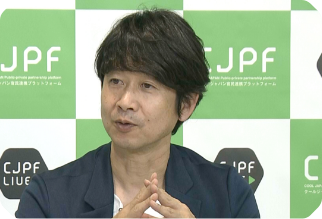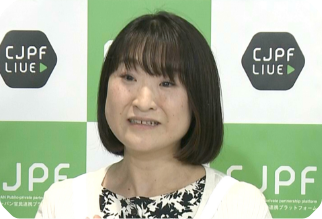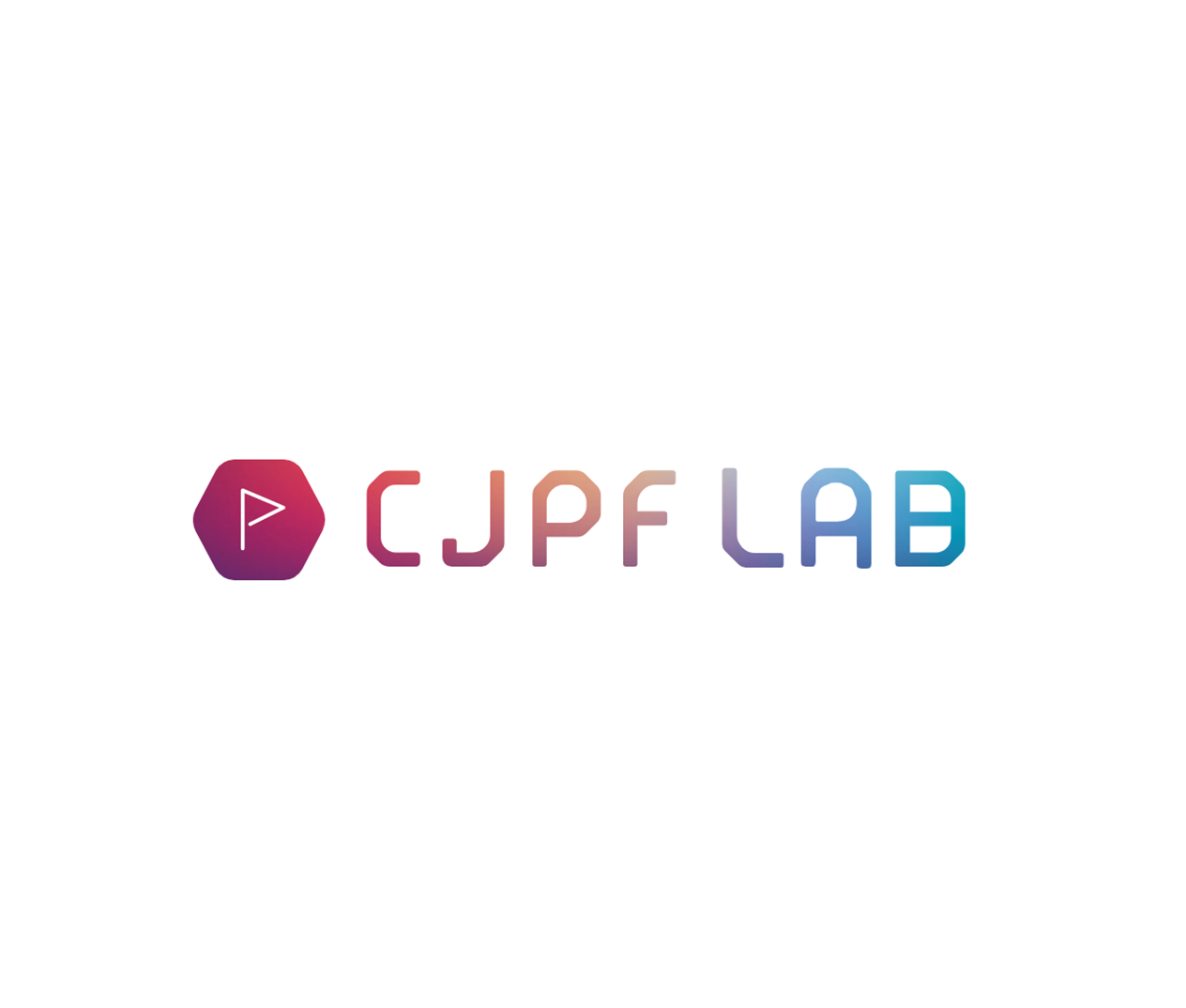Carrying on tradition. Building from the ground up. Transforming adversity into opportunity. Creating new, diverse food and food culture from Hiroshima.
The second CJPF Live was held on November 10, 2022, in Hiroshima. Hiroshima is currently garnering worldwide attention as the host prefecture for the G7 Summit in 2023. The prefecture itself has a stair-step terrain, from the Chugoku Mountains in the north to the Seto Inland Sea in the south. Overall, Hiroshima has a warm climate, but there are areas of some heavy snowfall in the north. In this sense, it could be called a microcosm of Japan. While perhaps the most well-known food in Hiroshima is the soul food such as okonomiyaki, oysters, and momiji manju, the prefecture’s rich natural surroundings have given rise to a diverse range of ingredients and food culture. In this CJPF Live session, we discussed the charms and future of Hiroshima’s food with the “next-generation of regional leaders” and experts with an overseas perspective.
Respect for the history and tradition of local food、and food culture can lead tocreate new value with co-creation.
There are many obstacles to creating new charms. Yuya Ota says that it is co-creation that helped him to make his ideals to realize from the ground up.
“My project began when I visited local farmers and asked them to share some of their grapes. Although they were a bit uncertain at first, when we successfully produced wine and set up a winery and a restaurant, they began to believe in the potential of Setouchi Jozojo and supported it. I feel pleased to generate synergy to agriculture and food by pairing food and wine from Hiroshima and also conveying the thoughts of the farmers.”
Paul Walsh, on the other hand, says that communication and development are the key when promoting new attractions. “Particularly when communicating overseas, it’s important to create stories to make people want to support the local foods and ingredients, including why they are adored in Japan, and the producers’ thoughts and hardships. In other areas, I’m also looking forward to developments coping with diversity, such as vegan foods.”
On the importance of product stories, Miho Imada says that “’making ginjo as a global language’ is my theme. We make our products with the hope that more people overseas will realize the excellence of ginjo sake. I would like to communicate the great potential of Japanese sake through our products, such as Seafood, which is used white koji mould used in shochu production to create a lemon-like acidity to make oyster tasty, and Legacy, a richly sweet sake which is used ginjo sake instead of brewing water and match meat and Chinese dishes.”

Adversity is opportunity.Designing new value through co-creation.
The theme of the second part of this session is “reverse innovation from local regions born from adversity.” Below are two successful examples of Hiroshima-born innovations that have developed into something new through a global perspective.
Example 1: TSS Production, a TV program production company in Hiroshima
TSS Production is a TV production company from Hiroshima, and also runs Sekaitaku, a business which supports the development of overseas sales channels. The business was launched when the company set up its own online TV program as a means to overcome its declining business performance. After searching for a French TV producer to raise recognition of the program, TSS Production gave an artist her big break in France by creating a person-focused documentary program. Using this expertise, TSS Production helped a jeans manufacturer achieve a twofold increase in its overseas sales. Today, the company even works with mainly SMEs to support the expansion of their overseas sales channels.
Example 2: Ritsumeikan University—GastroEdu Project
Making use of the online lessons during the pandemic, Ritsumeikan University is promoting the GastroEdu Project—combining the words gastronomy, astronomy, and education—to connect food-related producers using online and discover new possibilities for Japanese food ingredients. One such project is Lemon Adventure, a workshop cooperated with Setoda Town, Onomichi City, Hiroshima Prefecture, with the largest production of lemons in Japan, and Amalfi, Italy. This workshop led to start the development and sale of lemon tiramisu using Setoda lemons and set up a new co-creation initiative.

Inheritance of a vertical axis linkingthe past to the future,and the development ofa horizontal axis connecting regions and overseas.
This second CJPF Live session discussed food and food culture inHiroshima. What is the creation of the new attractions of regional foods uncovered by the discussion? Cool Japan producer Shujiro Kusumoto says the following:
“Participating in this second CJPF Live helped me realize that the enthusiasm where adults seriously dreamed and talked passionately with each other was the new Cool Japan. To dream is to go towards the future. To do so, it is essential that we have our own coordinate grids and combine vertical and horizontal axes. For example, the vertical axis could be the inheritance from the past to the future to protect Hiroshima’s nature, history, and food culture. The horizontal axis, on the other hand, could be co-creation with local regions and communication to the world. This vertical and horizontal relationships will be reviewed, considered, and built upon. My goal is to link these achievements to the future and make the dreams come true together.”

登壇者プロフィール
-

Miho Imada
Chief Brewer and Representative Director, Imada Sake Brewing Co., Ltd.
Miho Imada was born in Akitsu Town (today’s Higashihiroshima City) in Hiroshima Prefecture. After graduating from Meiji University, Imada worked at a major department store and a traditional arts group before returning to her hometown in 1994 to join Imada Sake Brewing. With a desire to produce sake unique to Akitsu and Hiroshima, she revived the native variety of sake rice called “Hattanso”, which had not been produced for more than a century. She has also proactively opened up overseas markets. The brewery’s Fukucho Hattanso Junmai Ginjo sake has garnered wide acclaim overseas, such as winning the highest Platinum Award at the Kura Master competition in France for two consecutive years, and the Gold Award at the international sake competition CINVE2021 in Spain. She was the only Japanese to be selected for the BBC’s “100 Women” in 2020. -

Yuya Ota
Representative Director, SETOUCHIJOZOJO Co., Ltd. Representative Director, forC Inc.
Born in Mihara City in Hiroshima Prefecture, Yuya Ota moved to Tokyo to study at Meiji University. At the age of 25 he set up forC Inc., offering consulting services for regional development. Using his experience working with food-related businesses in Mihara City, and with a desire to solve the local issues by himself, he set up Setouchi Jozojo based on the “Wine and Wineries that Travels in Setouchi” concept in 2019. Through Setouchi Jozojo, he promotes the terroir (climate) of the Setouchi area both domestically and internationally by producing wine from various regions in Setouchi and pairing them with Setouchi cuisine. He is working to solve local issues such as agriculture and the inheritance of food culture. -

Paul Walsh
Representative Director and President, JizoHat Co., Ltd.
Born in the UK, Paul Walsh joined the JET Program after graduating from university and worked as an English teacher in Oita Prefecture for three years. After that, he traveled around Asia and came to Hiroshima. While working as a lecturer at Hiroshima University of Economics, in 2000 he launched “GetHiroshima.com” to communicate the appeals of Hiroshima in English. Also, he published tourist information maps focusing on restaurants in Hiroshima City and the free magazine “Get Hiroshima”. Considering restaurants as key places to link tourists visiting Japan with Japanese, he particularly focuses on communicating information on food. In 2018, he established JizoHat. Today, he promotes the charms of the Hiroshima area and local news via his website and social media platforms, offers consulting services for inbound tourism, and engages in promotion projects for local governments. -

Michihiro Shirakami
TSS Production Business Producer
In 2009, Michihiro Shirakami launched Japan in Motion, a regular TV program broadcasted in France, creating a centralized platform for promotion and sales channel development. Today he works as a producer on overseas development, helping to develop overseas markets for Hiroshima oysters and Japanese sake, as well as the overseas market development promotion projects of the Ministry of Agriculture, Forestry and Fisheries and the Ministry of Economy, Trade and Industry. Further, while implementing sales tests and conducting marketing surveys, he has also developed sales channels for Kyoto tea, fresh Wasabi from Azumino City in Nagano Prefecture, and processed food products from Hiroshima Prefecture in France, Monaco, Los Angeles, and Thailand. For his achievements, he has been awarded the Minister for Internal Affairs and Communications Award and was appointed as regional revitalization leader by the Cabinet Office. In the approximately four years since the outbreak of the COVID-19 pandemic in 2019, he has supported the development of sales channels for 225 processed food products and succeeded in many of them. -

Tomomi Nonaka
Associate Professor, College of Gastronomy Management, Ritsumeikan University
With a Ph.D in system engineering, Tomomi Nonaka specializes in production system engineering and service engineering. After graduating from the Faculty of Environment and Information Studies at Keio University, she worked in web marketing at a company, and completed the Master’s and Doctorate degrees at Keio University as an inaugural member of the Graduate School of System Design and Management. Later, she worked as a project assistant professor at the Kobe University Graduate School of System Informatics, assistant professor at the Department of Industrial and Systems Engineering, College of Science and Engineering, Aoyama Gakuin University, as well as in other positions before taking up her current role. In recent years, she has been engaged in research on system design of sustainable society and business, and that of human-machine co-creation service production considering employee satisfaction. She is also involved in such projects as the GAstroEdu Project for the co-creation of regional value that connects people and regions through the theme of food, system designing of food services through human-machine co-creation, Onomichi Setoda Lemon Project in Hiroshima Prefecture, Potato Adventure in Kutchan Town, Hokkaido, and Beef Adventure in Iwaizumi Town, Iwate Prefecture. -

Shujiro Kusumoto
Representative Director and President, CAFE COMPANY Inc. Representative Director and CEO, GOOD EAT COMPANY Inc.
Born in Fukuoka Prefecture, Shujiro Kusumoto joined Recruit Cosmos after graduating from the School of Political Science and Economics at Waseda University. He then worked for Ohmae Kenichi Office in 1993 and established Cafe Company, Inc. in 2001. He positioned “Cafe (Community Access for Everyone)” as an essential infrastructure in the next generation to create communities with sensitivity and empathy between people. Through his company, he is engaged in restaurant planning and management, the production of commercial facilities, and regional revitalization. In 2021, he set up Good Eat Company, Inc. alongside NTT Docomo, with the vision of “connecting the thoughts, experiences, and techniques of those who love Japanese food to the future and disseminate them to the wider world”. He is also a current member of the Cool Japan Strategy Committee promoted by the Cabinet Office. -

Kenichi Watanabe
Director, Cool Japan Public-Private Partnership Platform Value Designer, XPJP Inc.
Born in Tochigi City in Tochigi Prefecture, Kenichi Watanabe graduated from Gakushuin University before joining KDDI and the Asahi Shimbun Company. He went on to study social media marketing and media strategy at the University of California San Diego and international business at the University of Washington. He returned to the Asahi Shimbun Company after returning to Japan, and worked on a collaborative project with the Japanese government. In 2008, he was then dispatched to the Office for the Promotion of Regional Revitalization at the Cabinet Secretariat. He established the regional production company Genki Japan in 2010, the public-private social production company XPJP in 2015, and a space design company Space SAGA in 2021. He currently develops a range of collaborative projects nationwide with governments, businesses, media outlets, and citizens across Japan. He also serves as a visiting professor at the Kyoto University of the Arts, a visiting professor at the Tohoku University of Art and Design, and a researcher at the Graduate School of System Design and Management at Keio University. One of his hobbies is playing lacrosse.





